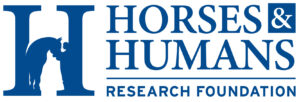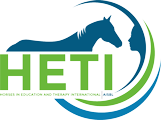
Chagrin Falls, OH – April 26, 2023 – Horses and Humans Research Foundation (HHRF) has awarded $10,000 to Baylor University for their innovative research project “A proof of concept study of functional near infrared spectroscopy to elucidate neurophysiological mechanism of action of equine-assisted services.” This study will be led by Beth Lanning, PhD, a Professor of Public Health at Baylor University. Co-principal investigators include Cory Smith, PhD. Baylor University, William Marchand, MD, LFAPA, University of Utah and VA Salt Lake City Health Care System, and Elena Nazarenko, MS, VA Salt Lake City Health Care System.
Equine-assisted services (EAS) are used for civilian and military trauma survivors. However, the field is in the early stages of scientific development and rigorous research is lacking. Further, the neurophysiological mechanisms underlying EAS benefits are unknown. An understanding of neural adaptations responsible for positive outcomes will allow for further development of optimal treatment methodologies. Thus, studies are needed to disambiguate mechanisms of action. This innovative pilot study will move the field forward by enhancing our ability to measure neurophysiological mechanisms of action.
In this study, a functional near-infrared spectroscopy (fNIRS) will be used to evaluate changes in brain activation. Heart rate variability (HRV) and psychological data will also be collected and analyzed to explore associations between psychological and physiological results. This study will lay the groundwork for future rigorous studies aimed at disambiguating neurophysiological changes associated with EAS participation. Specifically, the investigators aim to determine: 1) whether fNIRS methodology can be used to explore neural responses to EAS participation and 2) if so, will fNIRS results correlate with HRV and psychological instrument outcomes, thus demonstrating utility as a tool to assess neural mechanisms underlying the benefits of EAS.
Dr. Beth Lanning states “We are thrilled to be the recipients of the Horses and Humans Research Foundation Innovative Grant award. While we acknowledge the need for and value of large clinical trials to move EAS research forward, we also recognize the critical need to develop and validate physiological and neurological assessments that can be used in those future clinical trials. The ability to assess neurophysiological changes in real time in the arena or space where the human-horse interaction is occurring is of vital importance to understanding how and why EAS is beneficial for humans. Funding sources such as the HHRF Innovative Grant mechanism provide the financial opportunity to explore novel ideas such as using functional near-infrared spectroscopy to evaluate real time brain activation. We are immensely grateful to HHRF for this opportunity and hope the data collected during our study will provide a strong foundation for future clinical trials.”
On behalf of HHRF, Dr. Pebbles Turbeville shares “the board is very excited about this innovative grant project that truly embodies the spirit of the grant through using a new way to research horse-human connections, this project was unanimously selected.”
Contribute to HHRF today and help ensure that important research, and education about research on horse-human interactions continues. For more information about HHRF, this project, past awarded research projects and our current call for proposals visit the website horsesandhumans.org or contact Dr. Pebbles Turbeville, Executive Director, exec.director@
Mission: “Through sustained investment in rigorous research and educational initiatives, Horses and Humans Research Foundation serves as a catalyst to advance global knowledge of horse-human interactions and their impact on health and well-being of people, horses and other equines.” * such as Donkeys and Mules
